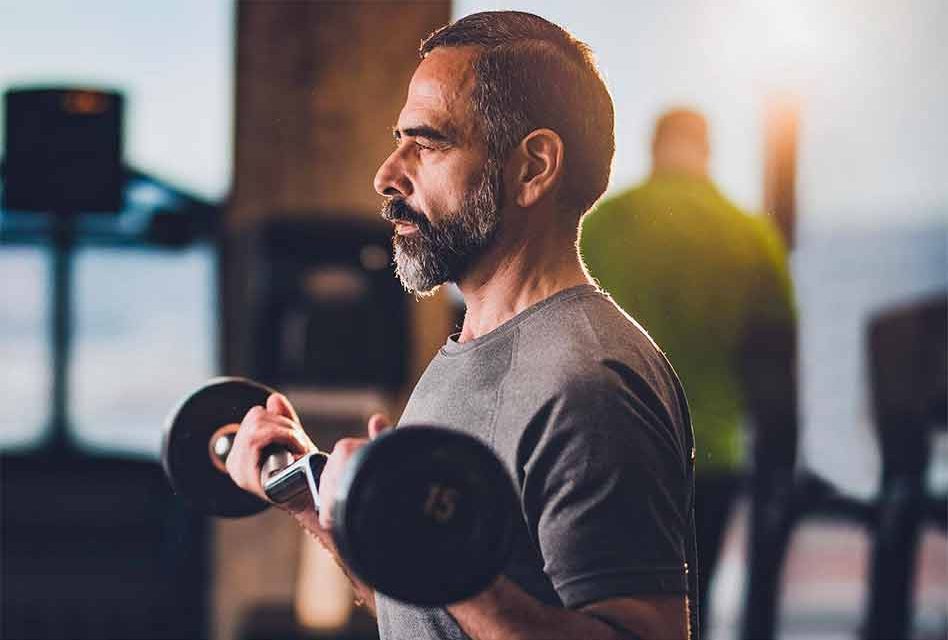
Ryan V. Coleman, CSCS
Orlando Health
As we age, our bodies go through lifestyle and hormonal changes that affect our mobility. Age-related muscle loss, or sarcopenia, leads the list, but it can be slowed — and even reversed — by diet and exercise. Although generally affecting seniors, sarcopenia can begin in your 30s.
Maintaining strong muscle mass as you age builds strength, preserves bone density and can keep you physically independent. It also may cut your osteoporosis risk, improve sleep and reduce depression. Additionally, if you suffer from chronic diseases such as heart disease, arthritis or diabetes, a muscle-building routine can help to lessen symptoms.
Exercises To Help Rebuild Muscle
Before beginning an exercise routine, get your doctor’s approval. Take a list of any concerns to your first workout so your trainer or physical therapist can consider your health history when designing a workout and nutrition plan to help you reach your goals.
A well-rounded exercise program addresses flexibility, cardio and balance, but don’t forget to include strength or resistance training as well. The goal is to set your body’s natural muscle-building response in motion. Each time you stress a muscle to the point of working it, your muscle adapts to the damage and builds itself up.
Work out three to four times a week, giving your muscles time in between to repair themselves. Working different muscle groups and getting plenty of rest helps, too. Start by using lower weights and doing eight to 12 repetitions in two to three sets. As the workout becomes easier, increase the resistance — by using heavier weights, for example. Remember to start with a warmup, end with a cooldown and drink plenty of water.
Tools To Get You Started
Resistance training tools include:
● Free weights — kettlebells, barbells
● Resistance bands — large rubber bands (looped or straight) with handles at the end
● Suspension equipment — helps control form and provides easy weight monitoring
● Body weight — use your own body weight to provide resistance (planks, pushups)
The Centers for Disease Control and Prevention (CDC) has put together an easy-to-follow manual for seniors that can help you get started.
Diet Also Makes a Difference
Experts recommend eating more healthy proteins once you start muscle resistance training. This ensures your body won’t slip into negative muscle protein synthesis (MPS), which can lower muscle functionality and lead to atrophy.
Be sure to spread your protein consumption out and don’t just have a big steak for dinner. The American Journal of Clinical Nutrition found that those who distribute their daily recommended allowance into 30 grams at each meal will develop stronger, leaner muscles. The protein sources should be low-fat, unprocessed and varied, and can include the addition of low-sugar protein shakes.

















